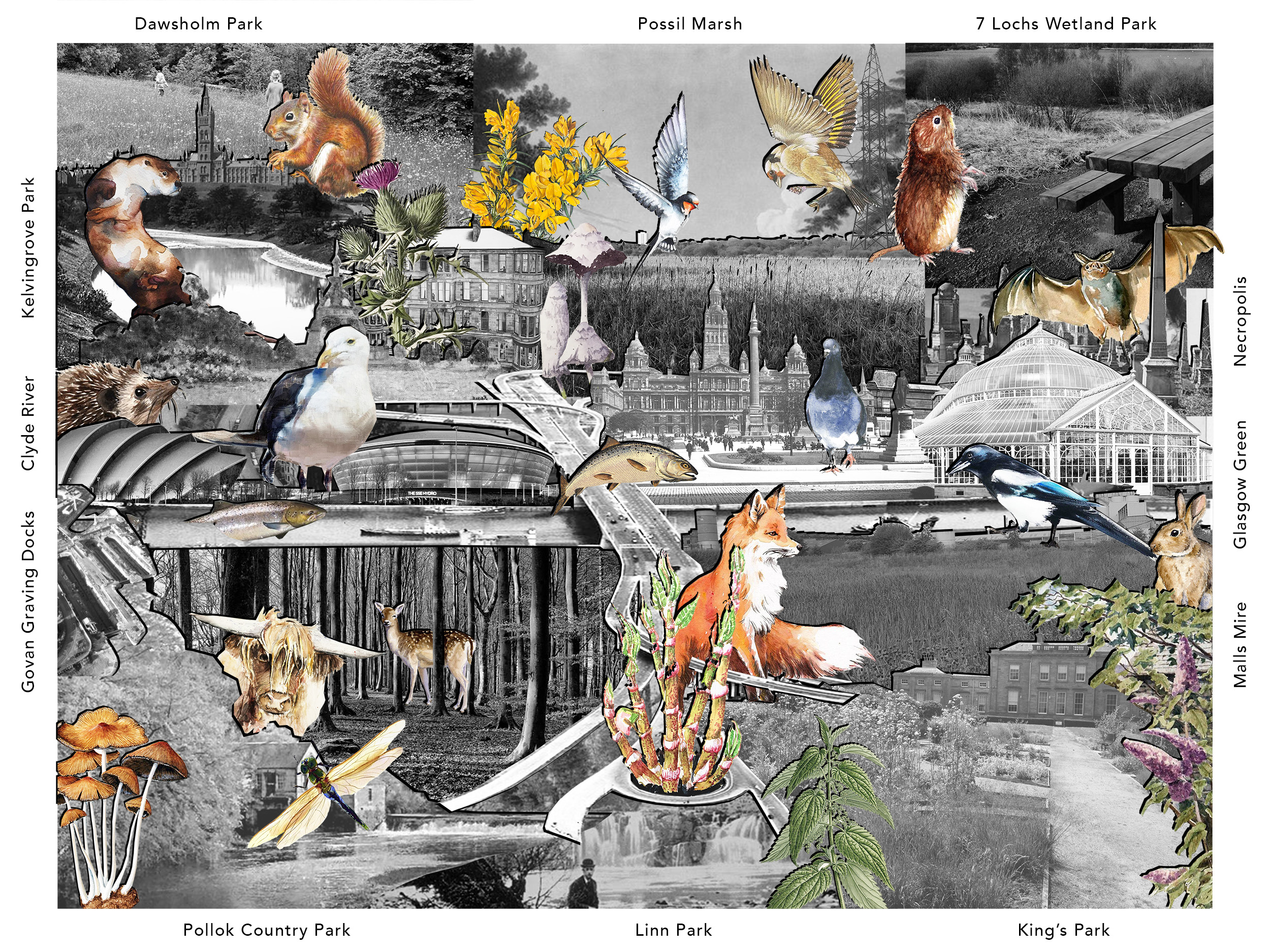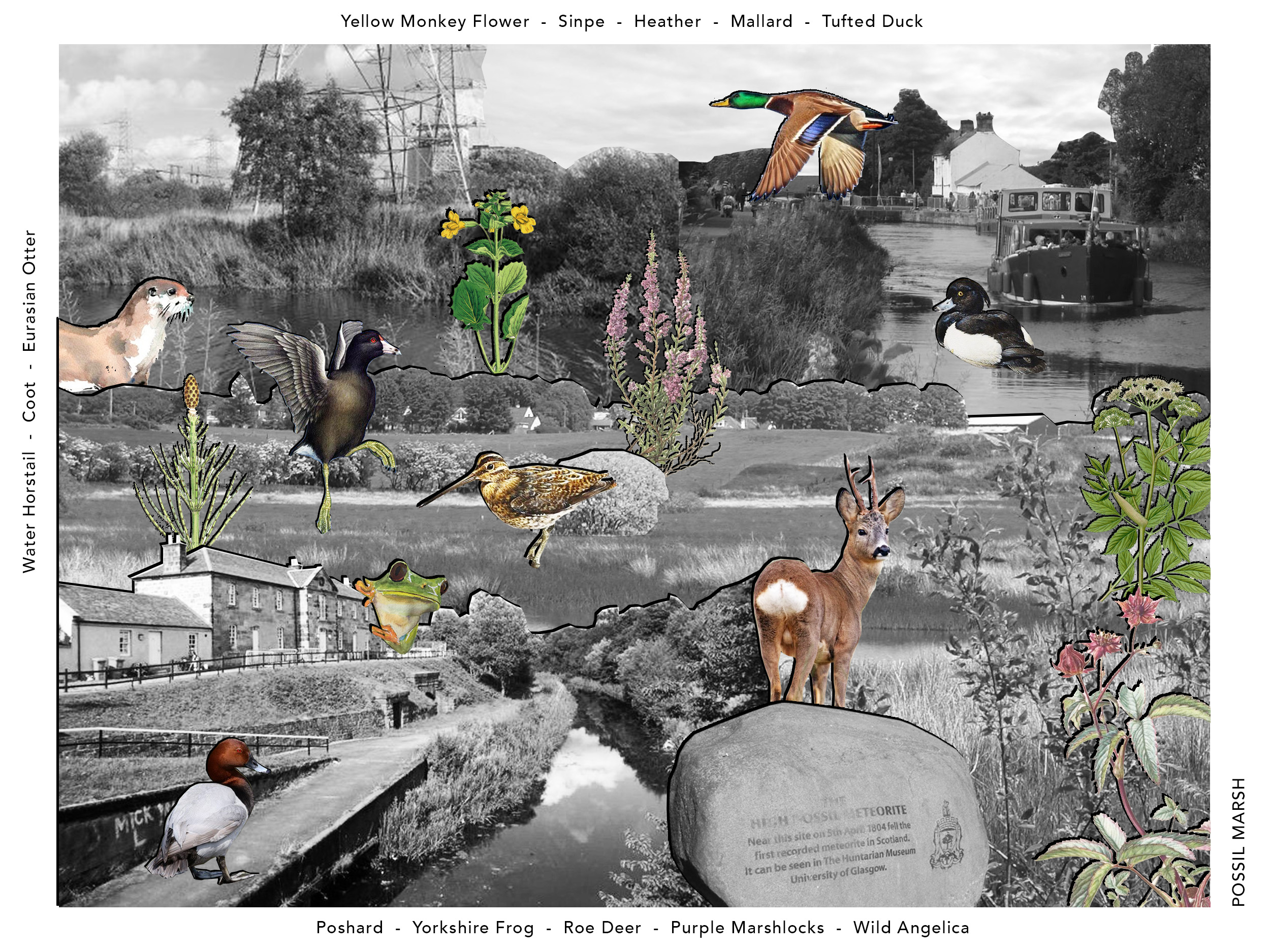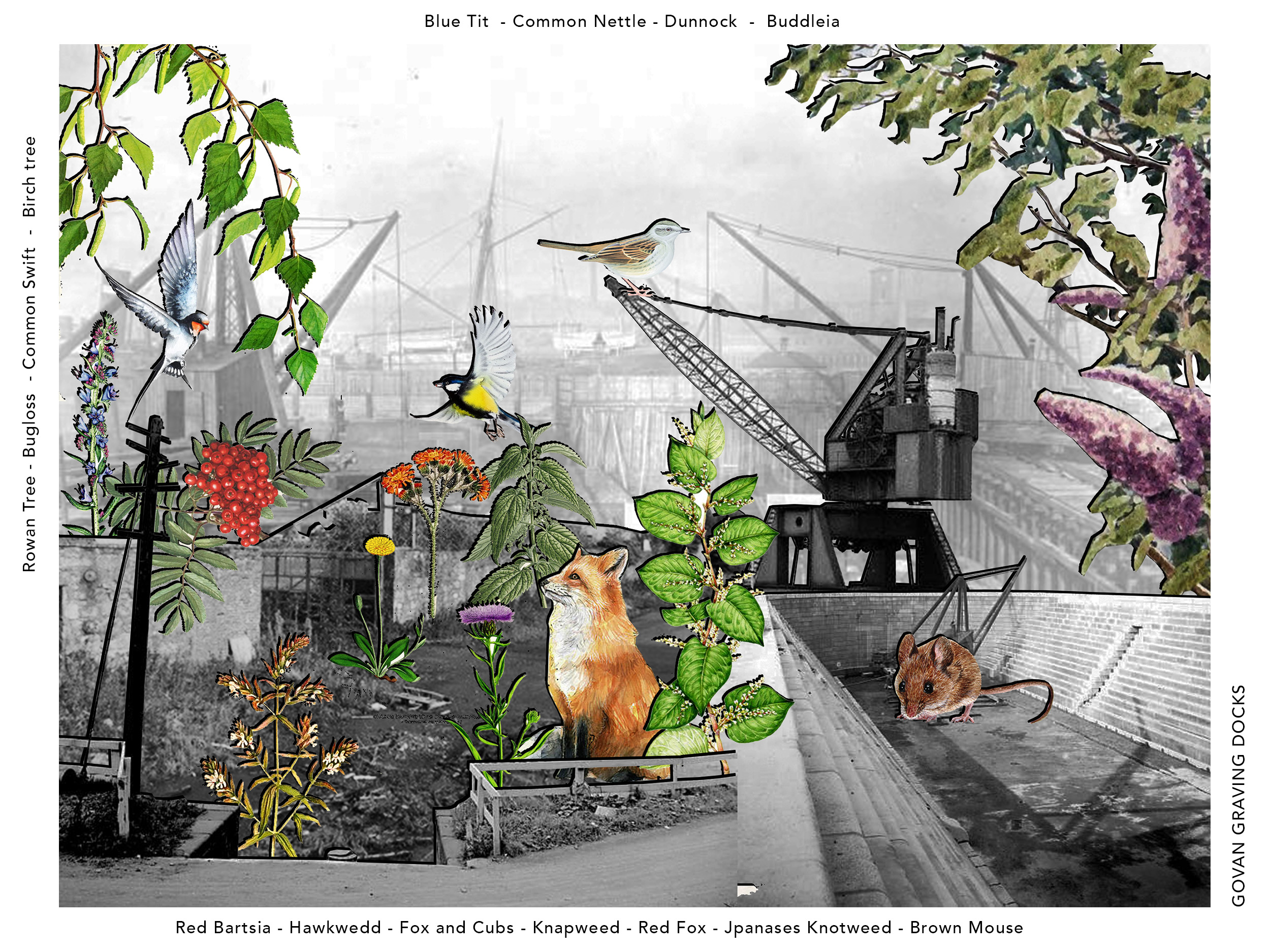Glasgow is a city for human habitation but also a landscape for non-human species. Due to the rapid industrialisation, many places of this landscape has been altered for the benefit of a singular species. The capitalist economic system has been dredging and concealing rivers and burns, levelling and poisoning the soil, altering and segregating places of non-human habitation with large scale infrastructures and leaving them to decay once they are unable to provide a profit. Today, Glasgow has one of the highest numbers of derelict and vacant sites in Scotland, many of which is contaminated with heavy metals like lead, remnants of the shipbuilding industry. But even with this heavy poisoning, plants and animals find their way back into these lands, which provide them with some dwelling and breeding spaces and food sources.
In comparison to the high numbers of derelict sites, Glasgow has only one area which has been given the status of a Site of Special Scientific Interest. Possil Marsh is home to many native and endangered species, it has unique and important fauna and flora, which is set out to be protected and conserved. But while sites like the Possil Marsh have been enjoying a protective status, the level of contamination in other places like Govan Graving Docks prevent further diversification of the existing wildlife. With the ever increasing effects of climate change, these vacant and derelict sites could become important places for non-human species to take refuge and for humans to take responsibility over their past actions and learn to coexist with others.
Key Themes: Boundaries, Ecology, Industry



